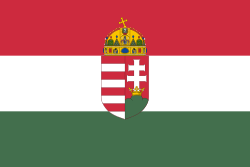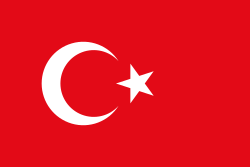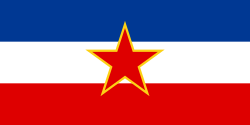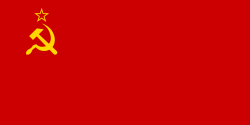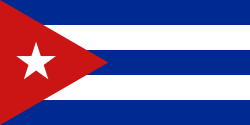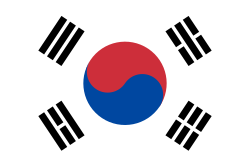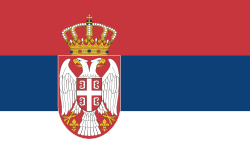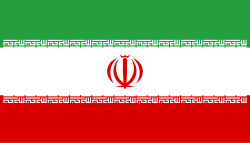Steeve Guénot
| Steeve Guénot | |
|---|---|
© Marie-Lan Nguyen / Wikimedia Commons, CC BY 3.0 Steeve Guénot (8. února 2014) | |
| Osobní informace | |
| Datum narození | 2. října 1985 (38 let) |
| Místo narození | Chalon-sur-Saône |
| Příbuzní | Christophe Guénot (sourozenec) |
| Některá data mohou pocházet z datové položky. | |
| Přehled medailí | ||
|---|---|---|
| zlato | LOH 2008 | lehká váha |
| bronz | LOH 2012 | lehká váha |
| Mistrovství světa v zápasu řecko-římském | ||
| stříbro | MS 2007 | lehká váha |
| Mistrovství Evropy v zápasu řecko-římském | ||
| bronz | ME 2010 | lehká váha |
Steeve François Fabien Guénot (* 2. října 1985 Chalon-sur-Saône) je francouzský reprezentant v zápase řecko-římském. Soutěží v lehké váze, je členem pařížského klubu Union sportive métropolitaine des transports. Je bronzovým medailistou z mistrovství Evropy v zápasu řecko-římském 2006 a stříbrným z mistrovství světa v zápasu řecko-římském 2007. Na Letních olympijských hrách 2008 získal pro Francii první zlatou medaili ze zápasnických soutěží od roku 1936, když ve finále zdolal Kanatbeka Begalijeva z Kyrgyzstánu. Na Letních olympijských hrách 2012 získal bronzovou medaili, když ho v semifinále porazil pozdější vítěz, Jihokorejec Kim Hjon-u. Vybojoval také sedm titulů mistra Francie. Je nositelem Řádu čestné legie. Pochází ze sportovní rodiny, jeho starší bratr Christophe Guénot je také olympijským medailistou v zápase.
Externí odkazy
 Obrázky, zvuky či videa k tématu Steeve Guénot na Wikimedia Commons
Obrázky, zvuky či videa k tématu Steeve Guénot na Wikimedia Commons - Steeve Guénot v databázi Olympedia (anglicky)
- L'Equipe de France aux JO de Pékin Archivováno 4. 3. 2016 na Wayback Machine.
- International Wrestling Database
Média použitá na této stránce
Olympic Rings without "rims" (gaps between the rings), As used, eg. in the logos of the 2008 and 2016 Olympics. The colour scheme applied here was specified in 2023 guidelines.
Olympic Rings without "rims" (gaps between the rings), As used, eg. in the logos of the 2008 and 2016 Olympics. The colour scheme applied here was specified in 2023 guidelines.
Autor: F l a n k e r, Licence: CC BY-SA 2.5
Flag of the Kingdom of Sardinia (1851-1861) and of the Kingdom of Italy (1861-1946). Use: Civil flag and ensign. In a governmental or a military context, the crowned version (see Crowned version) was always used (as State flag and naval ensign).
Autor: F l a n k e r, Licence: CC BY-SA 2.5
Flag of the Kingdom of Sardinia (1851-1861) and of the Kingdom of Italy (1861-1946). Use: Civil flag and ensign. In a governmental or a military context, the crowned version (see Crowned version) was always used (as State flag and naval ensign).
Finská vlajka
Flag of Hungary, from 6 November 1915 to 29 November 1918 and from August 1919 until mid/late 1946.
(c) I, Cmapm, CC BY-SA 3.0
The flag of the Soviet Union (1955-1991) using a darker shade of red.
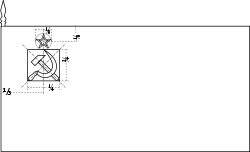
(c) I, Cmapm, CC BY-SA 3.0
The flag of the Soviet Union (1955-1991) using a darker shade of red.

Variant version of a flag of Japan, used between January 27, 1870 and August 13, 1999 (aspect ratio 7:10).
Flag of Romania, (21 August 1965 - 22 December 1989/officialy 27 December 1989).

Construction sheet of the Flag of Romania as depicted in Decree nr. 972 from 5 November 1968.
- l = 2/3 × L
- C = 1/3 × L
- S = 2/5 × l
Flag of Romania, (21 August 1965 - 22 December 1989/officialy 27 December 1989).

Construction sheet of the Flag of Romania as depicted in Decree nr. 972 from 5 November 1968.
- l = 2/3 × L
- C = 1/3 × L
- S = 2/5 × l
Flag of the Socialist Federal Republic of Yugoslavia (1946-1992).
The design (blazon) is defined in Article 4 of the Constitution for the Republic of Yugoslavia (1946). [1]
Flag of the Socialist Federal Republic of Yugoslavia (1946-1992).
The design (blazon) is defined in Article 4 of the Constitution for the Republic of Yugoslavia (1946). [1]
Flag of Iran. The tricolor flag was introduced in 1906, but after the Islamic Revolution of 1979 the Arabic words 'Allahu akbar' ('God is great'), written in the Kufic script of the Qur'an and repeated 22 times, were added to the red and green strips where they border the white central strip and in the middle is the emblem of Iran (which is a stylized Persian alphabet of the Arabic word Allah ("God")).
The official ISIRI standard (translation at FotW) gives two slightly different methods of construction for the flag: a compass-and-straightedge construction used for File:Flag of Iran (official).svg, and a "simplified" construction sheet with rational numbers used for this file.
this is the flag of the Soviet Union in 1936. It was later replaced by File:Flag of the Soviet Union (1955-1980).svg.
© Marie-Lan Nguyen / Wikimedia Commons, CC BY 3.0
France's Steeve Guénot during his fight against Demeu Zhadrayev of Kazakhstan at the Golden Grand Prix of Paris.





